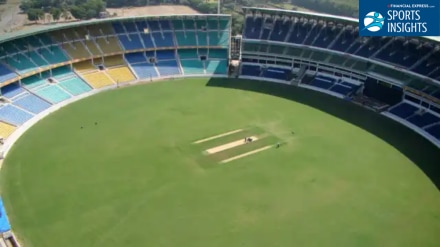On 26 November 1995, Nagpur’s VCA Ground was preparing for something the city had waited years to witness. An international match had finally returned after a long gap. India were hosting New Zealand, the stadium had been renovated, and the excitement in the city felt almost like a festival. Many people had saved for months to buy a ticket. Others came with passes that were commonly circulated during that period. Everyone wanted to be part of the occasion.
A Morning Full of Hope
That morning carried a sense of anticipation. The 1996 World Cup was around the corner and cricket was everywhere. Reports from that time mention how the eastern stand, a newly built two-tier structure, drew particular attention. Later inquiries would note that the wall separating the tiers was only a few inches thick. Such details were not widely known then, and the crowd simply streamed in, filling up the stands long before the match began. Stadium management in those years lacked the systems people take for granted today, which meant that the flow of spectators was harder to regulate.
The Collapse
The incident took place during the break between the two innings. New Zealand had finished batting and spectators in the eastern stand rushed to find better positions for the Indian innings. The pressure on that thin wall increased within minutes. The wall cracked under the weight of the crowd and gave way. People from the upper level fell through the opening and landed on the lower tier and the concrete areas below.
Official numbers eventually confirmed 13 deaths, and several newspapers at the time described how the injured were carried out in panic. Some survivors later said they barely understood what had happened until they were already outside the stand.
The Struggle to Respond
Once the collapse occurred, the situation became difficult to control. Police officers tried to manage the crowd and assist the injured, but early reports suggest that medical help took time to arrive. A few of the injured were transported to hospitals in police vans. Several journalists who covered the match wrote in the following days about the slow arrival of ambulances and the confusion surrounding communication inside and outside the venue. People close to the incident often recalled how long those minutes felt.
Inside the Stadium
One of the most unusual parts of the day, and something that still gets mentioned in old clippings, was that the match continued. Officials later stated that they were concerned about the possibility of unrest if the game was stopped suddenly. Broadcasting practices at the time meant that television viewers did not immediately learn what had happened. Broadcasters usually waited for official statements before showing or announcing anything related to accidents in stadiums. As a result, the atmosphere inside the ground carried on in a very different way from what was unfolding outside.
Earlier Warnings
This was not the first accident connected to overcrowding in Indian stadiums. Archival material from the 1966 Test at Eden Gardens describes a crowd surge that led to violence and a fire inside the ground. Later, in 1996, the World Cup semifinal at Kolkata saw the match halted due to crowd unrest and safety concerns. These incidents showed how easily large gatherings during cricket matches could become dangerous during that era if crowd movement was not properly controlled.
The Days That Followed
Contemporary news reports show limited public communication from officials and players in the immediate aftermath. For many families, this absence of visible acknowledgment felt difficult. At the next match of the tour, held in Mumbai, New Zealand’s manager handed a handwritten condolence message to the media. One of their players, Roger Twose, was the only player across both teams who wore a black armband as a personal gesture. Small actions like these were remembered by people who followed the story closely, simply because there were so few public markers of grief.
Where It Stands Today
Three decades later, the Nagpur tragedy is rarely discussed, and many cricket followers are not aware that it occurred at all. The tragedy lives now only in yellowing newspaper clippings, forgotten PDFs of inquiry reports, and the memories of those who were there.
The people who were affected carried the memory forward, even as the wider story faded from regular conversation. It stands today as a reminder of how quickly a day of celebration can change, and how important careful crowd and structural planning became in the years that followed.
Nagpur 1995 remains India’s forgotten cricket tragedy; a stark reminder that celebrations can turn to mourning in the time it takes for a few inches of concrete to crack. And that sometimes, the most important stories are the ones we choose to forget.
But they never really go away. They just wait for someone to remember.
